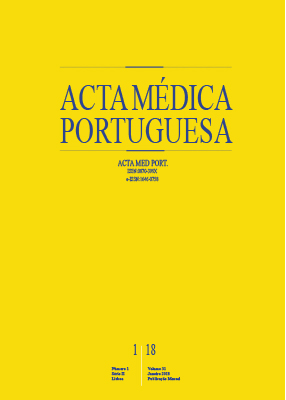Normas Clínicas e sua Implementação na Prática Médico Dentária
DOI:
https://doi.org/10.20344/amp.8942Palavras-chave:
Inquéritos e Questionários, Odontologia Baseada em Evidências, Padrões de Prática de DentistasResumo
Introdução: Este estudo tem como objetivo avaliar a abrangência da familiaridade, das atitudes e das perceções dos profissionais da área da saúde oral em relação às normas clínicas dentárias e a sua implementação na prática da Medicina Dentária diária.
Material e Métodos: Com esta finalidade, desenvolveu-se um questionário pelos membros da Federação Dentária Mundial, pelo Grupo de Trabalho da Organização Regional Europeia - “Relação entre Médicos Dentistas e as Universidades” e, foi implementado pelas Associações de Medicina Dentária/Estomatologia Nacionais de seis países da Organização Regional Europeia (Associação Estomatológica da Geórgia - Geórgia, Associação Nazionale Dentisti Italiani - Itália, Ordem dos Médicos Dentistas - , Associação Dentária Russa - Rússia, Associação Dentária Suíça - Suíça e Associação Dentária Turca - Turquia. O questionário foi preenchido por um total de 910 profissionais da área da saúde oral, membros de uma dessas associações de medicina dentária/estomatologia Nacionais e que, voluntariamente quiseram participar neste inquérito.
Resultados: A maioria dos entrevistados estava familiarizada com os normas clínicas dentárias (68%) e implementam-nas na clínica diária (61,7%) reconhecendo os seus benefícios (81,8%). Muitos participantes acreditavam que as normas clínicas dentárias poderiam ajudar a melhorar o plano de tratamento clínico (50,6%) e a precisão do diagnóstico (39,4%); que aumentou com a idade e os anos de prática (p < 0,05). A barreira mais frequentemente percecionada para a implementação efetiva dos normas clínicas dentárias foi expressa como ‘falta de conscientização’. Os participantes sugeriram o papel das associações de medicina dentária/estomatologia nacionais na disseminação das normas clínicas dentárias.
Discussão: Uma melhor compreensão das atitudes e perceções dos médicos dentistas em relação às normas clínicas dentárias, e do impacto potencial dos fatores que afetam tais atitudes e perceções, pode ser particularmente importante tendo em vista a necessidade de superar as barreiras existentes quando da implementação efetiva das normas clínicas dentárias na clínica diária.
Conclusão: Apesar da familiaridade significativa e de uma atitude positiva comum, os profissionais de saúde oral têm perceções diferentes em relação às normas clínicas dentárias, especialmente em relação à sua implementação efetiva na prática diária, benefícios e barreiras.
Downloads
Downloads
Publicado
Como Citar
Edição
Secção
Licença
Todos os artigos publicados na AMP são de acesso aberto e cumprem os requisitos das agências de financiamento ou instituições académicas. Relativamente à utilização por terceiros a AMP rege-se pelos termos da licença Creative Commons ‘Atribuição – Uso Não-Comercial – (CC-BY-NC)’.
É da responsabilidade do autor obter permissão para reproduzir figuras, tabelas, etc., de outras publicações. Após a aceitação de um artigo, os autores serão convidados a preencher uma “Declaração de Responsabilidade Autoral e Partilha de Direitos de Autor “(http://www.actamedicaportuguesa.com/info/AMP-NormasPublicacao.pdf) e a “Declaração de Potenciais Conflitos de Interesse” (http://www.icmje.org/conflicts-of-interest) do ICMJE. Será enviado um e-mail ao autor correspondente, confirmando a receção do manuscrito.
Após a publicação, os autores ficam autorizados a disponibilizar os seus artigos em repositórios das suas instituições de origem, desde que mencionem sempre onde foram publicados e de acordo com a licença Creative Commons









